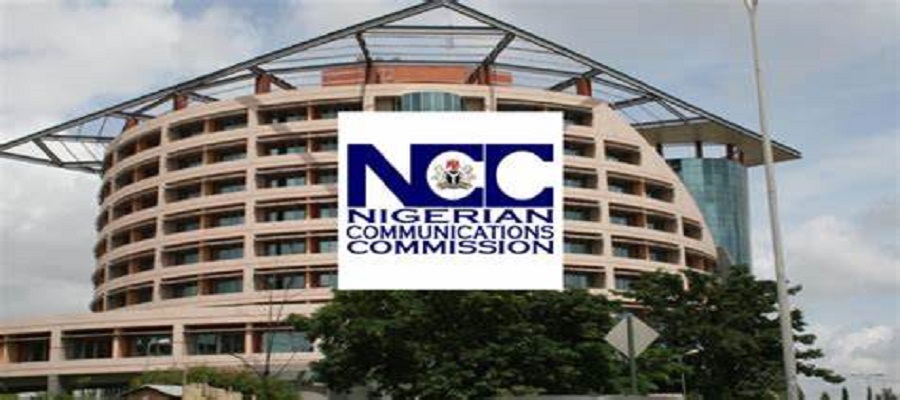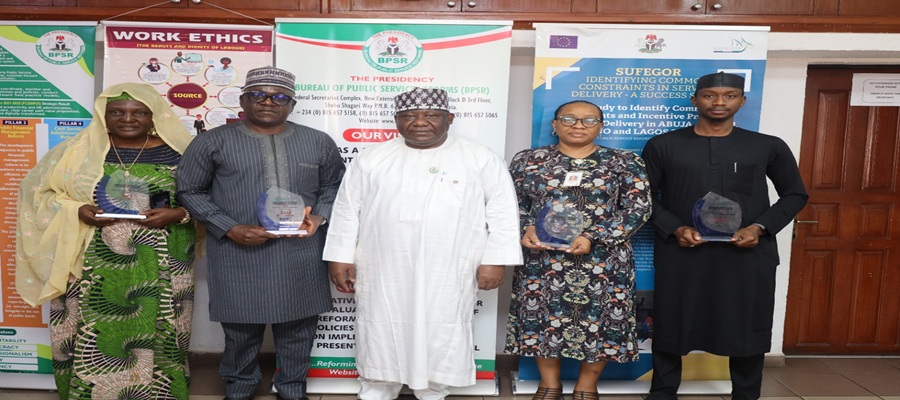Telecom
New-Gen Site Technology: Unleashing Potential of Pole Sites to Support MBB Growth

By peter oluka
Mobile Broadband (MBB) is developing rapidly across the world, especially in urban areas.
In this new era, wireless networks will require many small cells across a city to ensure a better user experience, improve network performance, and prepare for 5G-oriented evolution in the future.
This requires telecom operators to shift from pure macro cell towers, which are hundreds of feet tall and transmit wireless signals for miles, to embracing multi-layer networks that enable small cells from virtually any site such as street lamps, utility poles and traffic lights.
Market insights indicate that enormous resources are available around the globe for site deployment, including approximately 1 billion power and street light poles, 100 million monitoring and transmission poles, 10 million phone booths, and 10 million billboards.
Most of these poles already have the core elements required to deploy a site, such as power and transmission resources, and right of way (ROW), making them ideal site locations
It is estimated that the number of outdoor pole sites will exceed the number of traditional tower sites by 2020, and outdoor pole sites will become the mainstream option for the intermediate network layer.
In fact, according to ABI Research, over the next five years pole site usage is expected to grow by 26% per annum.
Challenges To Acquiring And Developing New Sites
The benefits of pole sites are recognized by operators and many are gaining access to sites through third-parties that have already-approved sites.
However, there are still significant obstacles in terms finding appropriate sites, obtaining permits and meeting regulations which have long approval cycles, and high rental fees.
For example, in South Africa the average site approval includes leasing negotiations, aviation approval, environmental approval, government approval, and many other links.
The approval cycle takes up to 6 months and the average success rate is only 30%. Traditional site construction takes at least one month and civil engineering costs account for nearly 50% of the total site construction costs which can impact the operators’ investment in equipment and network supply capacity.
Reducing Site Costs And Increasing Efficiency To Enable MBB Growth
To help operators overcome these challenges and seize growth opportunities, Huawei’s approach is to help operator optimize total cost of operation, shorten ROI and enhance site efficiency.
Huawei has developed innovative scenario-specific solutions namely PoleStar, TubeStar, and RuralStar that enable more sites in a simple, fast and cost-efficient manner.
Huawei PoleStar is for urban areas and can be installed on lamp posts and a variety of other locations in a matter of hours.
Huawei TubeStar enables wireless devices to be embedded in light poles and are therefore environmentally friendly allowing operators to easily obtain permission for installation in sensitive areas.
Huawei RuralStar is useful in rural areas because it decreases power consumption by 85% and cost by 70%.
Huawei provides operators with a total solution package (including site acquisition, equipment supply, and delivery) which helps them find new site resources and reduces on-air time with a 40% TCO saving. Huawei has already applied this model with several African operators.
In South Africa a site alliance has been formed from cooperation between stakeholders, such as the government, businesses and operators. With a wealth of experience in network planning, Huawei is fully aware of the locations where sites must be added and provided valuable insight into which specific sites could be leased to multiple operators.
By deploying pole sites, South Africa MTN which operates in many African countries, hassaved$75K in construction costs for each single site, the site TTM is only 4-5 months, and the investment payback period for central urban areas is less than 1 year.
Given the large investment that operators are planning to make to improve connectivity over the coming years, they must build new sites to optimize network coverage and accommodate the sustained increase in MBB traffic.
Pole sites are an ideal solution to these challenges and by partnering with Huawei, operators can reduce site CAPEX and OPEX to enable efficient MBB networks that improve citizens’ lives, create jobs and increase economic competitiveness.
Telecom
Nigeria’s Internet Usage Hits 1.24m Terabytes – NCC

Nigerian Communications Commission (NCC) has said that Nigeria’s internet usage reached a record 1.24 million terabytes in November 2025.

According to the latest data from the NCC, the figure rose modestly from 1.235 million terabytes in October, reflecting steady growth in digital activity across the country.
Broadband penetration in Nigeria crossed the halfway mark in November 2025, reaching 50.58 per cent, up from 45.61 per cent in January, the telecoms regulator reported.
The figure, however, falls short of the 70 per cent coverage target outlined in the National Broadband Plan 2020–2025, which expires this month.
The country had roughly 109 million broadband subscriptions by November. Growth has been uneven, hindered by infrastructure and regulatory constraints, including frequent fibre-optic vandalism that triggers 30 to 43 network cuts daily, high right-of-way fees, and declining subscriber numbers earlier in the year.
Expansion of mobile networks, particularly 3G and 4G services, alongside limited 5G rollouts in urban centres, affordable smartphones, and competitive data plans, has driven uptake.
Investments in the National Communications Backbone and private-sector initiatives have also improved access, especially in underserved areas.
While Nigeria is gradually improving digital inclusion, achieving the original broadband plan remains challenging due to high infrastructure costs, coverage limitations, and deployment hurdles.
The NCC maintains that continued investment in mobile networks and broadband infrastructure will sustain gradual growth in the sector.
Commenting on the development, some Nigerian analysts attributed the surge to the broader mobile and broadband adoption and the growing appetite for streaming, online learning and other digital services.
According to the analysts, the figures suggest that internet connectivity is no longer a luxury but a necessity for both business and leisure, underscoring the slow but steady expansion of Nigeria’s digital economy.
Telecom
NCC Ranked Among Top 3 MDAs for Best Website Performance in 2025

Bureau of Public Service Reforms (BPSR) has named the Nigerian Communications Commission (NCC) among the top three Ministries, Departments and Agencies (MDAs) of the Federal Government with the Best Ranking in Website Performance for 2025.

L-R: Head Special Projects, Nigerian Export Promotion Council (NEPC), Salamatu Andu; Executive Commissioner, Technical Services, Nigerian Communication Commission (NCC), Engr. Abaraham Oshadame; Director General Bureau of Public Service Reforms (BPSR), Head Customer Support Service, Galaxy Backbone, Rosemary Ehize; Secretary to the ES. Nigerian Content Development and Monitoring Board, Tahir Aminu at the BPSR award ceremony for top four MDAs in BPSR Website Performance and Ranking 2025 at the BPSR office on Tuesday, 23rd December, 2025.
This is coming barely three weeks after the telecom regulator was recognized as one of the top five best-performing Federal Government agencies for 2025 by the Presidential Enabling Business Environment Council (PEBEC) – a testament to the Commission’s consistency in investment in technology for ensuring efficient service delivery.
In the BPSR 2024/2025 scorecard ranking of agencies’ websites, the NCC came second in the ranking, trailing behind Galaxy Backbone Limited, which came first while the Nigeria Export Promotion Council (NEPC) clinched the third position, from a pool of 235 MDAs, whose website were evaluated.
BPSR deployed 14 evaluation criteria in include MDA’s website compliance with .gov.ng domain name, appearance and aesthetics (look and feel) of the website, content, relevance to MDAs mandate/government policy and the website’ structure.
Others include website’s responsiveness (device compatibility), security, load time, usability/ease of navigation, availability/uptime, functionality, interactivity, accessibility and capacity building.
The recognition was announced at the official release of Federal Government 2024/2025 Scorecard Ranking for MDAs’ Website held at the Federal Ministry of Finance Auditorium in Abuja on Monday (December 22, 2025) while the award presentation took place at BPSR’s Office on Tuesday (December 23, 2025).
The award, which is an important index metric of the National e-Government Masterplan for determining the Nigeria e-Government Status, was received by the Commission in recognition of its commitment to maintaining a world-class website that enhances service delivery to the citizens.
Receiving the award on behalf of the Executive Vice Chairman of the NCC, Dr. Aminu Maida, the NCC’s Executive Commissioner, Technical Services, Abraham Oshadami, appreciated the BPSR for the recognition, describing the award as “another encouragement for the Commission to be a better public service institution leveraging digital platforms such as our web presence to enhance public service delivery to our various stakeholders, thereby implementing the Federal Government’s Ease of Doing Business policy direction.”
While presenting the award to the NCC, alongside other two agencies, BPSR’s Director-General, Mr. Dasuki Arabi, commended the top three for their proactive decisions in maintaining world-class websites, which are compliant with the Federal Government’s policy direction in effective and efficient service delivery to the citizens.
According to the DG, the 2024/2025 MDA’s websites’ ranking represents a collective effort of federal public institutions in Nigeria to be transparent, accountable and open in governance, as well as a confirmation to align with global best practices in service delivery to the citizens.
Developed about six years ago, Arabi said as a result of the annual ranking, more public institutions have indicated readiness to embrace reforms, and align with the policy direction of the current administration’s Renewed Hope agenda on improve governance for effective service delivery, as introduced by His Excellency President Bola Ahmed Tinubu.
“The ideals of harnessing and deploying technological tools for service delivery has become imperative following the COVID pandemic, and distortions of socio-economic system of nations, culminating in the evolution of competitiveness, cost effectiveness, and agile governance.
“As engine room of governance, it behoves on us in the public service to perform our statutory duties and we must put in place technological innovations and standardized websites to operate services as well as deliver service needs to citizens,” he said.
The Scorecard exercise, he said, is part of the BPSR reform broader function of conducting research on reform implementation efforts and presenting ‘best practice’ models to the entire Public Service, and to among others, improve access to government information, facilitate seamless financial transaction, eliminate corruption and cyber theft, as well as facilitate access to government services.
Speaking on the rigorous nature of the exercise that produced the top three winners, the DG said “in the past few weeks members of the Scorecard Jury drawn from inter-Ministerial Agencies, had worked tirelessly to mill websites of selected MDAs through a rigorous process of enduring criteria for the ranking and the outcome had also passed through a quality assurance mechanism to validate the outcome.”
Telecom
Oyedele Dismisses Claims Bank Accounts Without TIN Will Be Frozen

Taiwo Oyedele, Chairman of the Presidential Committee on Fiscal Policy and Tax Reforms, has dismissed reports that bank accounts not linked to a Tax Identification Number (TIN) will be frozen or automatically debited from January 1, 2026.

Taiwo Oyedele
Oyedele described the claims as false and misleading, warning Nigerians against panic over misinformation surrounding recent tax and financial reforms.
In a post on his X handle Tuesday morning, he wrote: “Don’t let anyone manipulate you. Your bank account is safe. Misinformation makes you panic and fear a reform that is designed to help you.
“When they tell you that your account will be frozen or automatically debited from January 2026, ask them for the evidence in the new law. Be wise.”
He stressed that no provision in the new tax laws authorises the freezing of bank accounts, adding that the rumours are part of widespread misrepresentation of the reforms.
The committee chairman reiterated that the reforms are intended to simplify Nigeria’s tax system and ease the burden on ordinary citizens, not to impose punitive measures on bank customers.

 News3 days ago
News3 days agoFIRS Declares NIN, CAC Numbers as Tax IDs from 2026

 E-Financial3 days ago
E-Financial3 days agoWorld Bank Reveals Obstacles to Growth of Mobile Money Accounts in Sub-Saharan Africa

 Telecom3 days ago
Telecom3 days agoNCC Ranked Among Top 3 MDAs for Best Website Performance in 2025

 Telecom2 days ago
Telecom2 days agoNigeria’s Internet Usage Hits 1.24m Terabytes – NCC

 E-Financial14 hours ago
E-Financial14 hours agoBanks quietly move to enforce new ₦50 transfer levy from Jan. 1

 General News14 hours ago
General News14 hours agoEcobank Guarantees Seamless Digital Banking Services Throughout the Christmas and Year-End Period

 News1 hour ago
News1 hour agoHow Moniepoint’s Founders, Tosin Eniolorunda and Felix Ike are Redefining African Tech and Finance














